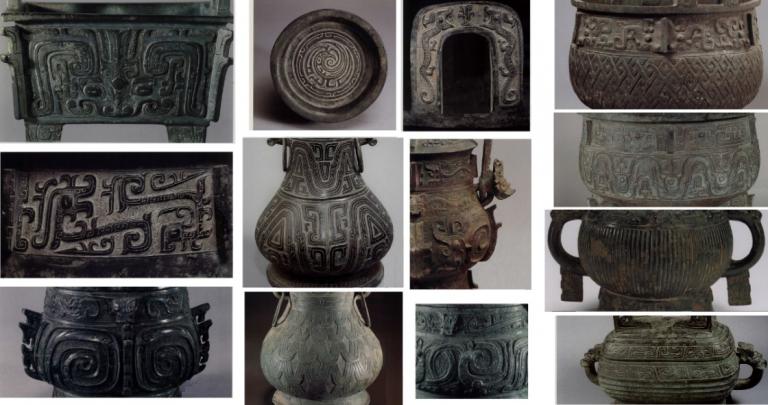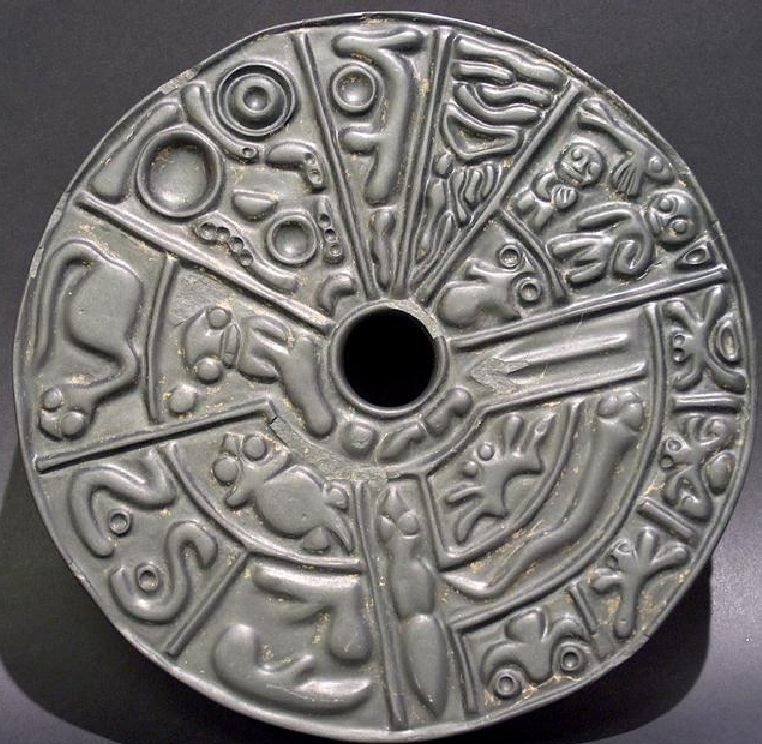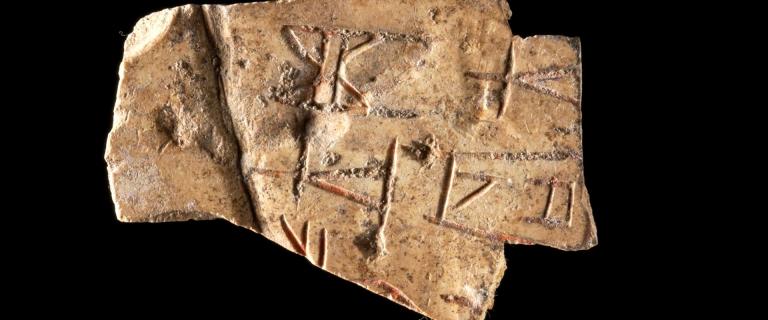Hard and Round Bronze Inscriptions
4 min readWhile the gold casting vessel with nine feet from the Xia dynasty is still part of legend, the exquisite bronze ware of the Shang dynasty has been excavated and come to people’s view as real as it is. Bronze wares are utensils made of copper alloys, usually with tin as the main additive, on which one can not only see veins and decorative design, but also many inscriptions. And the academia calls the inscriptions “bronze inscriptions”bell and vessel inscriptions with Dos characters”. According to statistics, more than six hundred bronze wares with tens of inscriptions were unearthed.

The earliest bronze ware with inscriptions is a now stored ng vessel) of Erligang culture period in the mid Shang bronze ge (an ancient cookir dynasty. It is now stored up in China National Museum. On the ware, there is only one inscribed character ” (gen, meaning extending), which might be the family name of its producer or recipient. Bronze inscription was the absolute origin for characters and calligraphy of the Zhou dynasty, especially the Western Zhou dynasty. Bronze inscriptions differ from oracle-bone inscriptions in many ways. First of all, they belong to different evolution perioa. d of calligraphy. Oracle-bone inscriptions are more graphic whose complicated strokes make them orepss pictures, whereas bronze inscriptions are simpler and more regular. They are less like pictures and many strokes in the middle part are omitted, the head and tail are less obvious. Taking the character”马 (horse) for example, in oracle-bone inscriptions it is like a real horse with even details, yet in bronze inscription, it is much simpler.
Another example is the character (head). In oracle-bone inscriptions it is like an animal head. Yet the bronze inscription of the character in the later period of Western Zhou is closer to small seal script. Number of the strokes of oracle-bone inscriptions i not fixed. People use different shapes of character to denote the same thing, whereas in bronze inscription, the number of strokes is fixed. For example, the character (field) in oracle-bone inscriptions has more various numbers of panes and strokes but in bronze inscription it is just in the shape of”田” as today. Besides, oracle-bone inscriptions were carved on oracle bones with knife, so the strokes are very thin. Bronze inscription, on the other hand, was produced with mold, so the strokes are wide in germination and without sharp points.
In terms of typeset, bronze inscription always arranges characters from top to bottom and lines from right to left, which reveals the aesthetic culture in pursuit of order and regularity in the Zhou dynasty. This is quite different from oracle-bone inscriptions which is less orderly arranged. Bronze inscription has set the basic typeset for calligraphy: from top to bottom in a natural way and from right to left deliberately. What’s more important is that in oracle-bone inscriptions, there are only 18% phonograms whereas in bronze inscription phonograms take up the largest proportion. More phonograms indicate that Chinese characters become closer and closer to an art of line which is more and more different from the art of picture. The trend of engraving and casting inscriptions on bronze ware started in the mid and late Shang dynasty, flourished in the Western Zhou, and gradually declined after the Warring States period. It totally lasted about one thousand years.

In thousan of calligraphy, the one-thousand-ye– history of bronze inscription can be divided into two periods: prior to the mid Western Zhou dynasty and after the mid Western Zhou dynasty. In the first period, the bronze inscription was known as “wave nscription, which still had some features of oracle-bone inscription wave vigorous and rough, with the first and last stroke in shape of wave. The characters were almost in lines, but not in rows. For example, in one piece of bronze inscription, some strokes are still from oracle-bone inscriptions, yet more curved lines are added to demonstrate the beginning of bronze inscription era. After the y, bronze inscription was more mature and known as “jade chopstick style” inscription. The strokes were round and flexible and the left and right parts of a character should be with the same height. The calligraphic skills of bronze inscription became mature and were not as rough, thick and stretched as before.
The new form was an evolution in calligraphy history, yet degeneration in terms of artistic value The contents of bronze inscription of the Western Zhou dynasty include six aspects: sacrificial rites, merit of war records, appointment grant, important treaty and documents, mandate to liegeman, and lauding ancestors. In the Qin and Han dynasties, some of the contents were out of date; some were recorded in form of stone inscription, bamboo-slip inscription and silk script. Therefore, bronze inscription declined and became part of history. It was not until the Qing dynasty when Deng Shiru imitated the strokes of bronze inscription with his special way of using brush that bronze inscription calligraphy gained its resurgence. Along with the flourishing of stele study, calligraphers once again paid attention to bronze inscription in the Shang dynasty for practicing seal script and doing research on new ways of structure forming.









